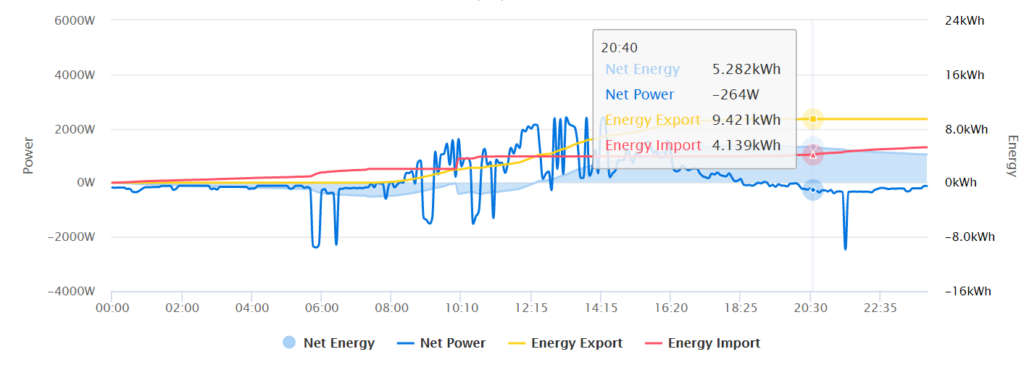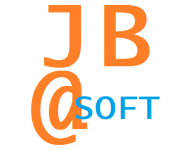To support the Dutch Omnik users I have started some more accessible wiki page in Dutch. Enjoy!
Category: Omnik Datalogger
New Docker builds for Omnik Data Logger
New Docker builds are available for Omnik Datalogger. Docker containers are ideal when you are not using Home Assistant or the Home Assistant community store (HACS). Docker builds can be easily deployed on multi platforms. Currently the following architectures are supported:
- linux/amd64
- linux/arm64
- linux/arm/v7
- linux/arm/v6
If you need a different architecture, please let me know. Docker and pip builds and are now automatically generated by Github actions when a new release is published.
See https://github.com/jbouwh/omnikdatalogger/wiki/Install-using-docker for more information. If you previous used Docker containers for this project, then make sure your configuration is correct. The default location for config files in the containers has been change to the /config folder.
Omnik api offline
If you were a happy user of omnik portal, you may have been noticed about Omnik bankruptcy throught the communications by Solarman. Solarman managed the infrastructure for Omnik all the time. Your omnik inverter is still logging its data the same way it did for years. The complete portal is still accessable from https://www.solarmanpv.com/portal. Here you can still use the credentials you used at omnikportal.com
Omnikdatalogger ‘omnikportal’ client removed from software.
Since the Omnikportal API is down too, you will need an alternative. Omnikdatalogger also has a solarmanpv client that can get your inverters logged data. See more about the configuration at the Omnikdatalogger WIKI pages or the Dutch WIKI pages on this site. Solarman has indicated they will continue to offer this as a free (trial) service till the end of 2021. With omnikdatalogger you also can get your inverters data using the tcpclient or localproxy client module.
Ready for production
Omnikdatalogger has been stabilized and updated to run stable with HACS and docker now. There were some problems during restarts, especially with HACS that now have been solved. Some parts of the DSMR integration did not shutdown properly. That is all solved now. I am curious to know how what your experience is with omnikdatalogger. Let me know using the comments.
Wiki udated
The omnikdatalogger wikipages have been updated and are completed now.
Docker support for Omnik data logger
Omnik data logger now also can be installed in docker container. This makes it easy to integrate in a docker based environment. This is an alternative to using AppDaemon with HACS.
Install the docker image
Use the command docker pull jbouwh/omnikdatalogger to pull the latest image.
To build image your self from git:
git clone https://github.com/jbouwh/omnikdatalogger
cd omnikdatalogger/
docker build --tag jbouwh/omnikdatalogger:latest .
Running the docker image
In the folowing example assumed is that the config file outside the container is at /home/pi/.omnik/config.yaml (user pi). In the docker image the user is omnik and the default location for the configuration inside the container is at /config/config.yaml
The -p option is only needed when the localproxy client is used with the tcp_proxy plugin.
Use --device option to give direct access to a DSMR compliant USB monitoring cable. Alternatively use ser2net.
Run image in the background using the following command:
docker run -d -v /home/pi/.omnik/config.yaml:/config/config.yaml -p 10004:10004 --device /dev/ttyUSB0 --name omnikdatalogger jbouwh/omnikdatalogger:latestOmnik data logger DSMR P1 support
With the new brand new release of Omnik data logger I have included support for the Dutch Smart Meter Requirements compliant Electricity meter. With a simple FTDI P1 to USB serial adapter Omnik datalogger now also publish your smart meter data including gas. With PVoutput this means we can also upload the consumed energy and calculate the netto energy used/delivered.

The P1 adapter can be either connected directly to your device or using TCP. I used ser2net to be able to connect multiple sessions to my P1 meter. To make this possible you will need at least ser2net v3.5. I have used a docker container installing ser2net (jsurf/rpi-ser2net:buster). Adding the max-connections option will enable me to do some debugging and in the mean will logging my data.
3333:raw:600:/dev/ttyUSB0:115200 NONE 1STOPBIT 8DATABITS -XONXOFF RTSCTS max-connections=3
/etc/ser2net.conf
If you publish your smart meter to Home Assistant this can replace the native dsmr integration include with Home Assistant. Over MQTT auto discovery Home Assistant will discover automatically. In the config file you can rename the entities for your smart meter. Addition direct use, direct consumption and the real calculated consumption data will be published over MQTT and InfluxDB.
HACS Default
Omnik data logger now has been added to the default store. This means there is no need to add a custom repository any more. You can find Omnik data logger at the Automation section.
Make sure you have installed the AppDaemon Add-on from the official Home Assistant Add-on store.

TCPclient tested and working now
Thanks to Han Lubach the tcpclient could be tested and corrected. It seems this client, based on Wouter van der Zwan’s logger is now usable with Omnik data logger as well.
Omnik data logger news update
PIP support for omnikdatalogger and omnikdatalogerproxy
Omnikdatalogger can now be installed using PIP:
sudo pip3 install omnikdatalogger
To install only omnikdataloggerproxy use sudo pip3 install omnikdataloggerproxy
HACS default support
Omnikdatalogger could be installed as a custom repository within HACS. A request to include Omnik data logger in the default repository was requested and approved.
First release candidate for Omnik data logger
The first release candidate for omnik datalogger has been released. Se more information at the project page.
New release for omnikdatalogger
You can find it here: https://github.com/jbouwh/omnikdatalogger/releases/tag/v0.93-beta
New features are:
- Local interception of inverter traffic with documentation and a proxy script
- Lots of updates
The documentation at this site still needs an update, but the documentation on Github was already updated already.
Have fun.
New release Omnik datalogger
Check https://GitHub.com/jbouwh/omnikdatalogger for the newrelease (0.91-beta) of Omnik datalogger.
The last days omnikport was down. In the mean while I found a second method getting access your the data. During the outage the portal at https://www.solarmanpv.com/portal was available the whole time. Here you can find your data aswell. This proves omnikportal is just a skin and the data is at solarman PV. I found an API and working code that gives access to the realtime information. This API seems to give more accurate and in time access to the most recent data that was logged. Unfortunally the API is not TLS encrypted and uses a MD5 hashed password login. Not very safe. Neverless the alternative API is a good alternative for the time being. In the main menu there is now a special page for the omnik datalogger sofware.
Pluggable client
The new release comes with a pluggable client for logging. This makes it easy to change the logging code by just changing the configuration.
New client in development for local logging
For older Omnik inverters it is not possible to get the data straight from the inverter. Newer inverters listen at port 8899 and are able to respond directly. The datalogger in the inverter sends an update about every 5 minutes to a fixed IP of a logging server in the Solarman datacenter. The IP address the inverter is logging to is fixed and cannot be changed via the interface, but it is possible to intercept the message by simulating the server using a NAT rule and a static route for the IP address in your netwerk. The code te parse the data that is logged is already available to use, thanks to Woutrrr. The software will be able to listen on a TCP port to the rerouted datalogger sessions. The code ewill be based on this project of t3kpunk. A tutorial how to use this will apear on this site as soon as the code is ready for release. Local logging will give more detail information then currently available using the API’s. Extra sensors will be:
- AV Voltage* and Current and Frequency (3 fase if yor model supports it)
- DC Voltages and Currents for all strings (max 2)
- The Temperature* of the inverter
*These values are submitted to PVoutput as well. And every new sensor will become available via the MQTT plugin.
DSMR integration
For ouput to pvoutput.org I have planned to make an integration for the Dutch Smart Meter (DSMR). An adapter from the P1 connector to a USB serial interface is general available. Integrating makes is possible to calculate the real energy consumption. Of course all these new sensor information will be available to the MQTT output plugin as well.
